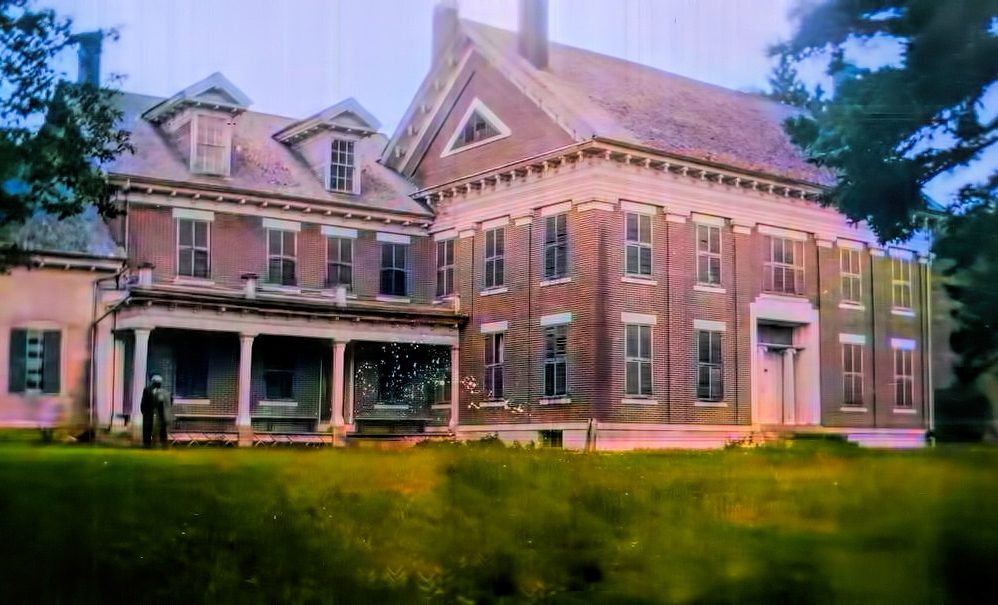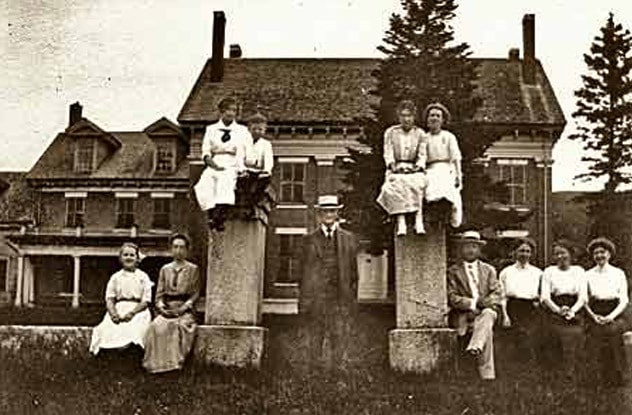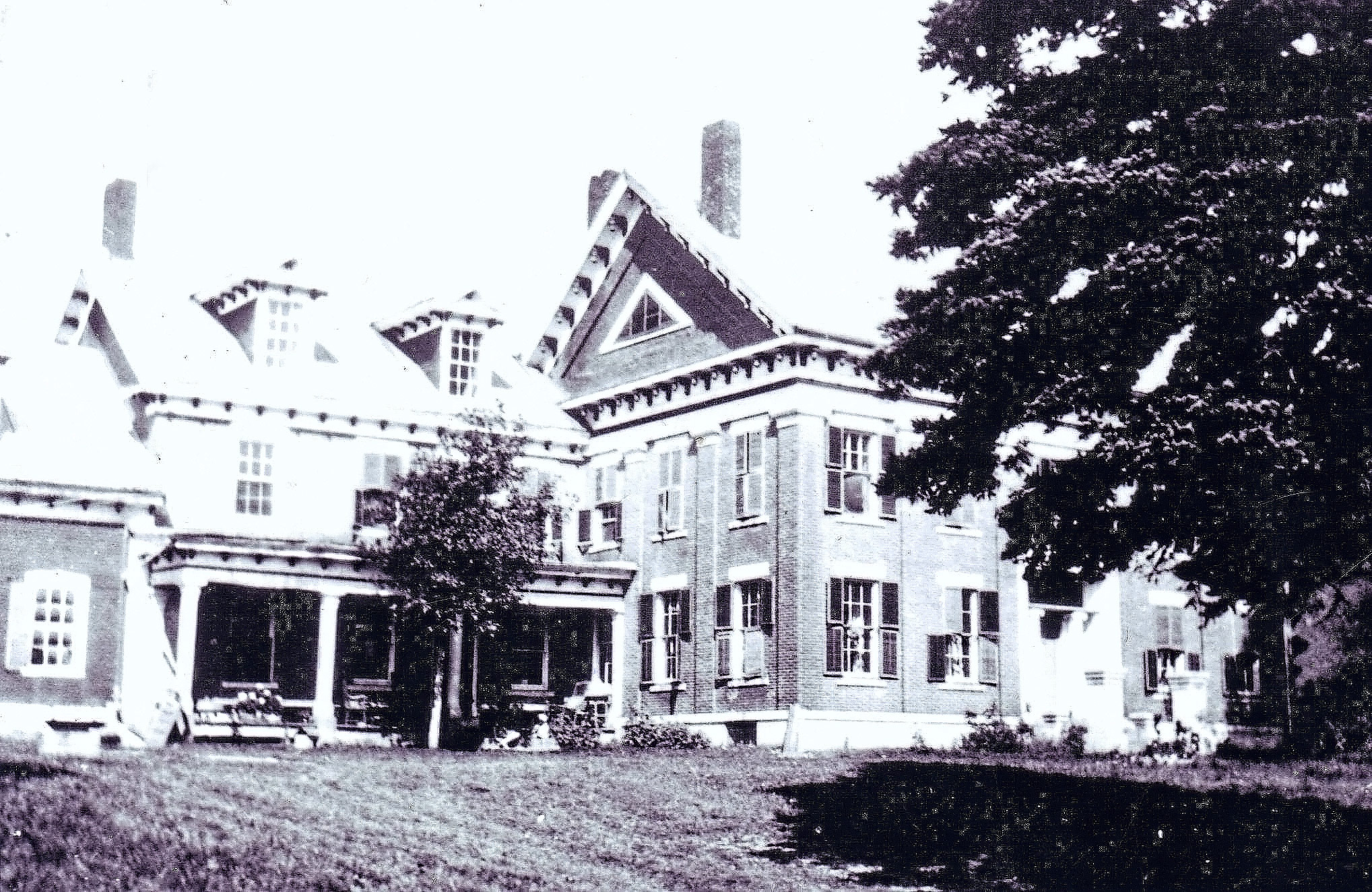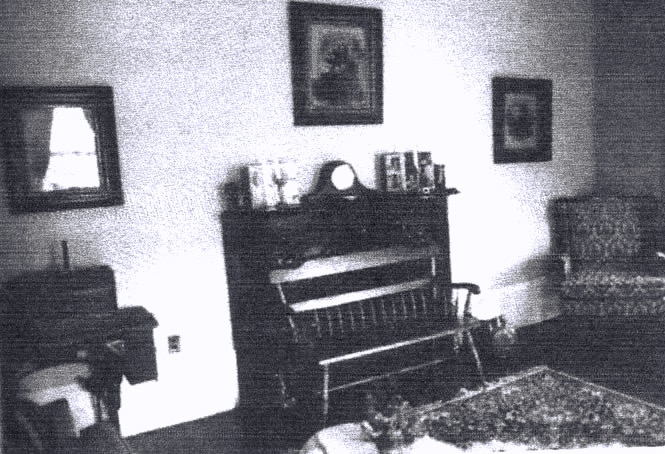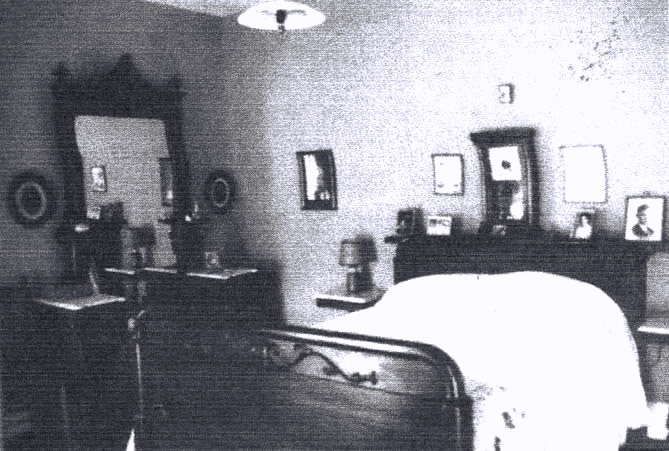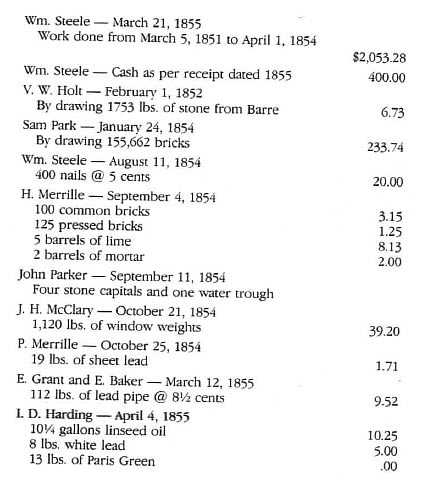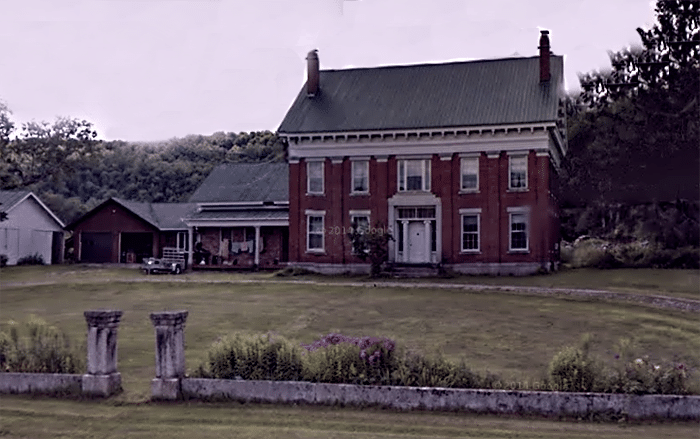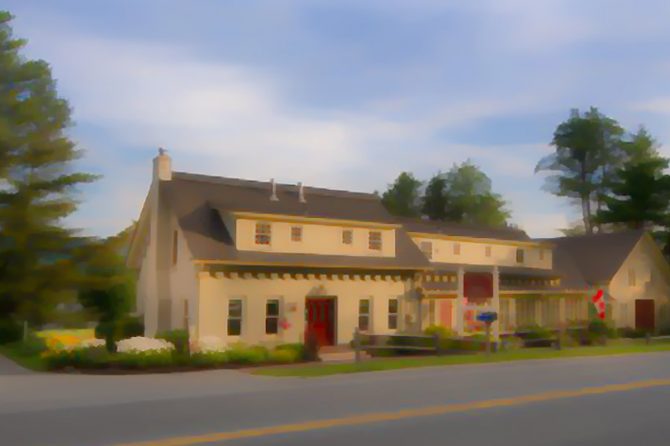Discover the mysterious story of the Hayden family of Albany, Vermont, and the eerie events that plagued their lives for generations. From unexplainable illnesses to tragic accidents and unexplained deaths, some have speculated that the Hayden family was cursed and doomed. Is this legend true or simply a story made up to frighten local children on a dark, stormy night?
Was the Hayden mansion a haunted house or a tragically cursed abode?
This article delves into the history of the Hayden family and explores the strange occurrences that have been attributed to their supposed curse. Drawing on historical records and eyewitness accounts, it examines the various theories surrounding the alleged curse, including possible explanations and alternative perspectives.
Through this intriguing and haunting story, readers will gain insights into the history and folklore of Vermont, as well as the power of superstition and the human need to find meaning in inexplicable events. Whether you believe in curses or not, the story of the Hayden family is sure to captivate and intrigue. Read on and decide for yourself.
Was the Hayden Family of Albany, VT cursed?
Legend has it that many years ago the entire Hayden family of Albany, VT perished as victims of a curse
From the photos above and below, it seemed that the Hayden family was once like many others. A happy family, enjoying life and smiling together.
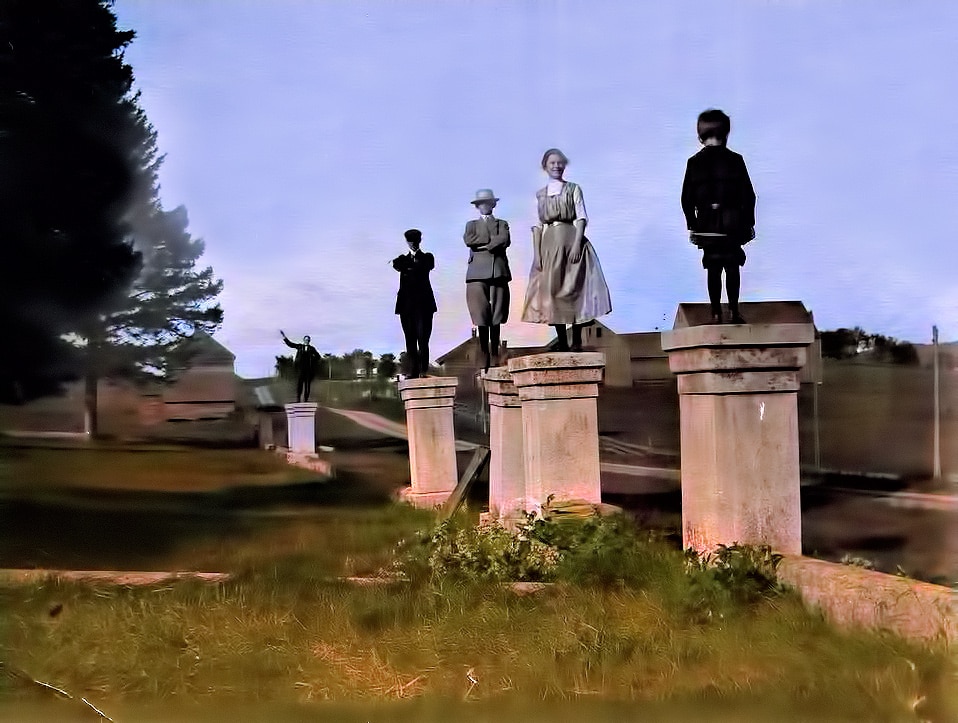
Photo colorized by Alpine Web Media.
The photos above show members of the Sanders and Rogers families posing for pictures at the Hayden House while on a picnic in 1919.
Happiness and Prosperity Was Not to Last
Ancestors of the Rogers family had taken in Mercie Dale prior to her death. At some point, she thought her son-in-law was poisoning her in order to get her money.
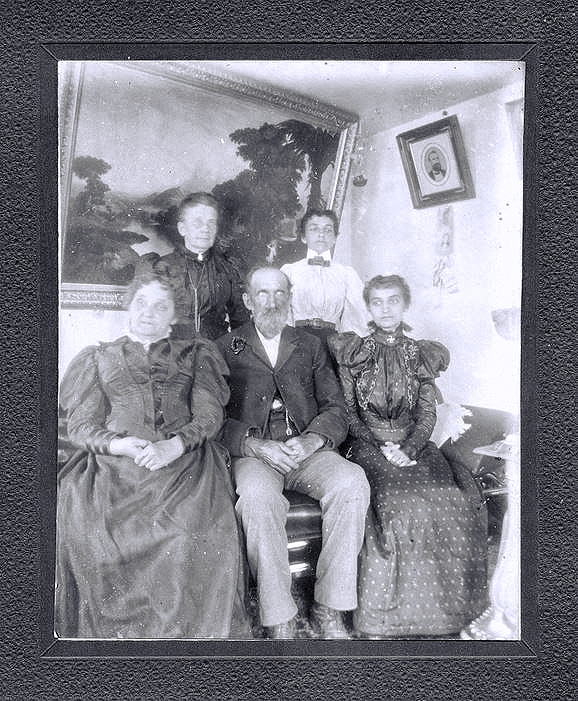
Photo above: The family of Mr. William Henry Hayden II circa 1890 Back row left to right: Unknown, Carrie Hayden. Front row left to right: Mrs. Henry Hayden, Mr. Henry Hayden, Mamie Hayden. Mamie was the last of the Hayden family passing away impoverished in Maine in 1927, and fulfilling her great grandmother’s curse. Courtesy of Old Stone House and Historic Village in Brownington, from the Emerson Collection.
Do the answers and other secrets lie within the final resting place of Henry Hayden?
In 1910, a horse drawn hearse carried the final remains of William Henry Hayden, last in the male line of his family, along the South Albany Road, to the village cemetery. Curtains were drawn across the mansion’s windows in tribute, even though the extravagantly furnished house had remained without a tenant for nearly 20 years. Some would remember Mercie Dale’s curse upon the family that the Hayden family name would die and pass into oblivion. What would happen now to the vacant, dark mansion with its wide fields and impressive barns? Was there a hidden family fortune and if so, where had it been secreted away?

Trouble begins when Mercie Dale accuses William of poisoning her
Over the years, William acquired so much land that in 1823 he found himself in serious financial trouble. His mother-in-law, Mercie Dale had given him money over the years to help but it had never been repaid while he continued to ask for more. Suspicion set in and Mercie Dale became victim to a long illness, accusing William of poisoning her.
The Ominous Hayden Curse
As the end came, Mercie uttered her ominous curse in the presence of her daughter, Silence: “The Hayden name shall die in the third generation and the last to bear the name shall die in poverty.” In the final days, neighbor Sally Rogers cared for Mercie until she died. Her body was interred in the Rogers family cemetery as Mercie refused to lay within the same cemetery as the Haydens.
Once the new mansion was built, the Hayden's enjoyed a privileged life that was the envy of the region. Pleasure rides in the horse drawn handsome carriages would often be the order of the day. There were servants to wait on family members. A New Year’s Eve grand party would be held on the third floor ballroom. It truly seemed that all was well within the Hayden family as they enjoyed their lavish lifestyle in rural Albany, Vermont.
The forgotten curse begins and victimizes the Hayden family
For the most part, life was truly going well for the Hayden’s and “the curse” was all but forgotten. Will and Azubah’s daughters were all married and soon bearing grandchildren regularly. Though one son, William Henry (known as Henry) was more often than not erratic in nature and not very dependable. It wasn’t long before things started to take a turn for the worse.
The Hayden family of Albany, New York suffered a series of misfortunes over several generations, leading some to believe they were truly cursed.
Patriarch Will Hayden and his wife Azubah had four sons, but only one, Henry, survived to adulthood. Henry showed signs of unstable behavior as he grew up. After Will lost most of the family's wealth, he and Azubah grew estranged. Will later went blind and died penniless in New York after fleeing to Canada to escape his creditors.
Henry Hayden Jr, Will's only surviving son, built an extravagant home for his family in 1854, after his father's death. The lavish mansion with its fancy carriages made the Henry Jr. household the envy of the neighborhood. With many servants to see to their needs, the Haydens lived comfortably. Their annual New Year's ball held in the mansion's third floor ballroom was a highlight of the social season.
As Henry Jr. exhibited further instability, his mother cut him out of her will. Henry Jr. had one daughter, Armenia (known as Mamie), before he died in 1910 from a cerebral hemorrhage. When Henry Jr's body was carried to the cemetery in a horse-drawn hearse, it passed by his former mansion. Though its curtains were drawn in tribute, the now-empty house stood as a symbol of the family's faded fortune, as Henry Jr. could no longer afford it in his later years.
Mamie was the last Hayden, and the final victim of the infamous family curse
Many recalled the supposed curse placed on the Haydens, believing it had come to pass. The sole surviving Hayden descended from Henry was his daughter Armenia, who went by Mamie. Mamie Hayden was left with only debts and a tarnished reputation. Ill and destitute, she moved to Waterville, Maine where she died alone and impoverished in February 1927.
With Mamie's death, the Hayden lineage ended, as did the suffering borne of Mercie Dale's infamous curse on the family.
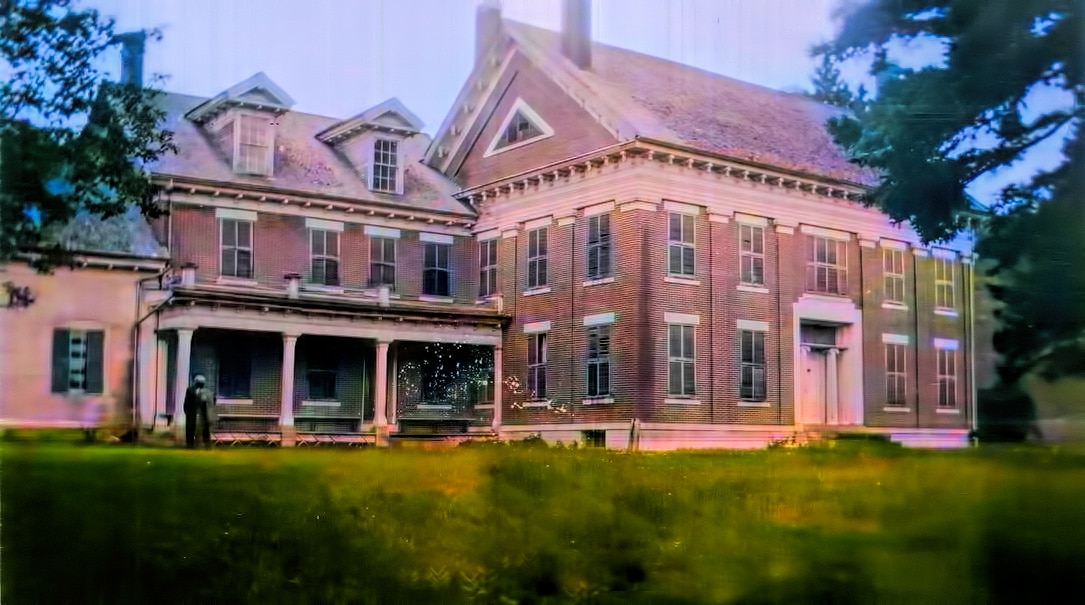
The Hayden Mansion and Land Purchased for $25,000
A Canadian family purchased the mansion and land for $25,000. Rumor is that the extensive bootlegging now took place within the estate, utilizing the underground tunnels previously used for smuggling Chinese. Public dances were held in the old ballroom as the new owners enjoyed their social status. Finally in 1922, the Canadians sold the property.
The Fall of the House of Hayden – Do ghosts of the doomed family inhabit the ill-fated mansion?
Over the years, each successive owner found the mansion difficult to maintain in the grand style it was accustomed to. During a period of hard financial times, the estate was sold off piece by piece, barns burned, the mansion fell into disrepair and the ell was engulfed by fire.
For many years, the mansion remained abandoned and was open inside and out to anyone passing by.
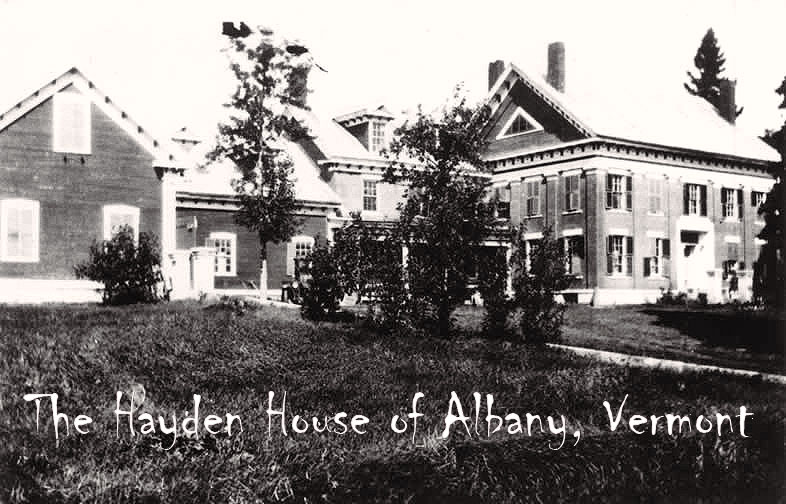
Stories of ghostly activity and odd lights within the abandoned house were reported by people passing by over the years.
Some claim to have heard violin music resonating from the ballroom on a brightly lit, full moon evening in the summer.
An interview with Dwight Dow in 1976, a descendant of the family, sets the record straight:
“Ghosts? Hell no!!! Just some drunk passin' by in the middle of the night making up things. They had a ballroom floor, on springs, for dancing but they weren't no ghosts or none of that. Who's the damn fool that told you that anyway?”
Dwight smiled and leaned back in his easy chair and chuckled. “Somebody sees the curtains blowing in the windows when they pass by and think they've seen a ghost.”
Note: Dwight Dow passed away in 1976, soon after the above interview.
The following is based on an interview with Helen Stacy of Albany, VT. on 6/10/2016:
Helen grew up at the Hayden house in the 1950's. She lived there for about 20 years, starting at age 11. Her family (Alfred and Goldie Mason) purchased the Hayden house for a mere $15,000 at the time. Helen said that there were a lot of fires at the property that seemingly started on their own. She recalls seeing a fire start in the roof of an outbuilding that started spontaneously while no one was in the area. She also recalls when the ell and carriage barn burned down, later replaced by the structure that's in place today.
One woman claims, “Yes, the Hayden house IS haunted!”
Despite the claim by Dwight Dow in a 1970's interview I conducted with him, Helen claims that there were indeed paranormal activities taking place within the house. Although she doesn't believe that there was an actual curse, she did say that the Hayden family died out and that misfortune haunted the house for years after.
Two of the stories she recalls are as follow:
“My mother saw ghosts at least twice. The first time, she noticed a man sitting in the living room dressed in Lincoln period clothes with a hat similar to what Abraham Lincoln wore. She didn't believe what she was seeing and tried to ignore it. But, she had a little boy visiting at the time and the boy saw the man too. He called it “Pepere” (meaning grandfather in French) and approached it but the apparition stood up, walked toward the hall and then vanished.”
“Another time, my mother heard old style ballroom music playing. It seemed to be coming from the dance hall in the upper portion of the house. Sort of like old fashioned waltz music. Curious as to where the music was coming from, she walked to the top of the stairs and the music just stopped and went away.”
Asked if she knew of any other odd, ghostly happenings…
“Well, I am 80 now, so I can't remember too many things but I do know that a lot of people would not stay at the house. Everybody in town knew there was something different about the Hayden house and most people didn't want to stay there.”
The following articles are courtesy of Vermont's Northland Journal:
The Legend of Albany’s Haunted House
by Gordon Alexander
For 364 days of the year when you hear of things going bump in the night you think of fender benders on I-91 or close encounters of the disastrous kind with Bullwinkle the Moose vs. Family Car.
On Halloween, where people go out of their way to scare each other and enjoy getting scared themselves, those bumps of the ghostly kind can sometimes give rise to bumps of the goose kind.
Back in the mid-1800s the Hayden Family living in the newly built Hayden House mansion, on Route 14 just outside Albany, probably didn’t have time for Halloween or realize they were all living on borrowed time, thanks to great-grandma.
The Hayden Family Curse
Unsuspecting, they were living under a curse imposed on them by Mercie Dale, the mother-in-law of family patriarch William Hayden Sr., who died before the house was built.
Before that time Mrs. Dale thought she was being a good mother-in-law, (not a Monster-in-Law) when she lent her daughter’s husband large sums of money to go towards the family’s business. Instead, Hayden squandered it away, supporting his lavish, party-hard lifestyle.
When Hayden Sr. refused to pay the money back, their mother-in-law–son-in-law relationship went downhill and dipped even further when she suspected that he was poisoning her to assure that he would never have to.
Legend says that on her death bed in 1806, Mercie cursed her high-stepping son -in-law and his family, saying that the third generation would be the last of the Hayden line. She was not a “happy camper” and William Sr. and his unsuspecting descendants were going to pay. Big time.
In 1854 William Hayden Jr. built the mansion that still stands today. He was not aware of the curse that he and his aging father, the focus of Mercie Dale’s wrath, were under.
In this photograph, William Jr. stands in the archway in front of the family mansion surrounded by his wife and cursed children. The building today still looks the same as it did more than 150 years ago.
William Jr. looks dignified in his picture but must have been something of a party animal like his dad. Plans for the building included a spring-suspended dance floor on the third floor to add a little bounce to his ballroom dances.
Dancing on a spring-suspended floor after a few glasses of wine paints a rather amusing picture. However, William Jr.’s children, being the third generation of Haydens and the focal point of Mercie’s curse, would find little to party about if they only knew their days were numbered.
Mercie’s “…or treat” from the grave came true because by 1927, according to various accounts, the entire Hayden family had gradually died due to an assortment of inexplicable illnesses.
The last Hayden at the family home was William Jr.’s son Henry, who—like his grandfather, was a few pumpkins short of a patch and pursued a goofy, but lavish lifestyle—piddled the family fortune away.
Henry died penniless in 1910, leaving a daughter who took sick and died away from the home in 1927, herself penniless. The curse was now complete.
Today they all rest in the Hayden family plot beside Route 14 at the north end of town. Mercie Dale rests somewhere in that cemetery, too, probably pleased with her curse-casting abilities. Do any of us really want to know where?
The handsome Greek Revival-style mansion on the National Register of Historic Places still stands today There are power lines running to the house, cars in the driveway, and TV antennas on the roof. High-speed traffic whizzes past the old pillars at the entrance, where the family once posed for this picture.
The old house and surroundings are reputed to be haunted and widely written up in legends and lore of northern Vermont. It is one of only a handful of reputedly haunted houses in the Northeast Kingdom.
Ghostly Lights Near the Hayden Property
Some say they can see ghostly lights near the property, thought to be spirits of slaves that perhaps were buried in unmarked graves in the field near the farm
Some say phantom violin music can sometimes be heard in and around the old mansion, probably a flashback to one of the lavish parties during happier times.
On Halloween night, roving bands of local mini ghosts and goblins, in assorted sizes looking for candy and treats, probably won’t be stopping at Hayden House… maybe out of respect for the grand old lady of all Vermont trick-or-treaters, Mercie Dale.
You might wonder if today Merci might opt for a fate a little less gothic for her son-in-law’s ancestors, perhaps instead treating them all to a little hunting trip with VP Dick Cheney. At any rate, if any of this ghost story is true, the morale should be: “If you borrow money from your mother-in-law—PAY HER!”
Gordon Alexander is a retired photojournalist, formerly with the Day newspaper published in New London, Connecticut. Part-time stringer photographer for the Hartford Bureau of the Associated Press. Part-time stringer photographer–writer with the Orleans Division of the Caledonian-Record.
Following is an excerpt from the February 2009 issue of Vermont's Northland Journal in which the now late Ray Griffin of Glover talked about his life, including a few years of his youth in the so-called haunted Hayden House on Route 14 in Albany.
Childhood Memories of Living in the Hayden House
by Scott Wheeler
Born in Newport Center on January 1, 1922, to Ray and Grace (Rogers) Griffin——one of six children, four boys and two girls—'Ray Griffin has good memories of the community of his birth although he four years old. His mother was a schoolteacher at Newport Graded School, and his father was a mechanic. Reflecting back, he said the family was quite well off considering the times. Then in 1925 the family packed up and moved to Albany for life on the farm.
They settled on what to this Hayden Farm. The farmhouse is part of the folklore of the county because for many decades some people have insisted it is haunted.
“I don’t know if it is haunted or not,” Griffin chuckled. Although he was about four when he moved there and he was only eight when the family moved out of the house in 1928, he does remember one incident that scared the daylights out of him, his brothers, and friends.
He explained that on the third level of the house there was a dance hall. Under the floor was a space where he and his brothers could climb down into and crawl around. Some people have told him the space was used to hide slaves escaping from the south on the way to Canada during the days of slavery. Others said that it was used as a stopover point for people smuggling Chinese people through the area (which was common at the turn of the twentieth century).
“One time we went in there and we touched something furry,” Griffin said. “Of course it scared the hell out of us and we went down and got my uncle Lesley, and he was quite a character anyways. He reached in there and got his hand on that furry thing and yanked it out of there and threw it into the bunch of us kids standing there. We all made a dash toward that stairway all at once. We all tumbled down the stairs. He said he’d never seen so many kids go down those stairs so fast to his life.”
“It was just an old fox skin,” Griffin laughed, thinking back all of those years.
Not only did he not find any ghosts in the house he didn’t find any other of the mysteries some people insisted lurked there. “People claimed there was a tunnel from the basement of that house to the barn but we could never find it.”
By the time of the Stock Market Crash of 1929 that sent the United States into what became known as the Great Depression, the Griffin family was well into a depression of their own.
The family’s herd of cattle contracted TB and their horses were diagnosed with colic.
“We lost our herd of cows and we lost our horses,” Griffin said. With their money supply gone his parents fell behind on their bills. One day, while on an outing to the Albany Village Fair, most likely trying to escape some of their worries for a time, they returned home to a horrible surprise that Griffin remembers to this day. The bank had seized the homestead.
“When we came home the house was all sealed up and the sheriff was inside the front door, and he wouldn’t let us in the house so my dad piled us into what looked like an old pickup truck. What it was, was an old sedan with the back part cut off.”
The family drove a few miles to Barton where Griffin said his father haggled with the banker to at least have the bank give them a place so his children could have a roof over their heads. Finally the banker capitulated and allowed the family to move into a farmhouse on Elm Street.
At least we had a roof over our heads,” Griffin said. Times were tough. This was the beginning of life in Barton for the Griffin family.
Update 5/22/2019 – Check out this somewhat “politically incorrect” 1922 article about the smuggling of Chinese at the Hayden property. Courtesy of Scott Wheeler of Vermont's Northland Journal
The first article is from the May 3, 1922, issue of the now defunct Orleans County Monitor.
Big Chinese Smuggling Ring Broken Up
An ordinary mud hole in the public highway, in the town of Irasburg one day last week, brought more people to grief than any ever recorded. It landed seven smuggled Chinamen, the big man in the business and eight other men connected, in Orleans County jail.
Through James Ford, inspector in charge of the local immigration office, the wheels of law and government were set in motion that unearthed the greatest smuggling story ever brought to light along the Canadian border, and shows the system of operation employed by the men behind the business. Immigration officers were kept on the jump all day Sunday rounding up the men connected with the business, which were scattered all along the route from Mansonville, P.Q., to Hardwick. While officers were in Hardwick making arrests and seizing cars, other officers were waiting at St. Mary’s church and escorted two of the morning worshipers to the local jail. No grass was caught growing under the feet of the immigration officers as the entire sixteen were rounded up from Thursday afternoon to Sunday night [April 27 to April 30].
Thursday forenoon, O.W. Metcalf of Irasburg noticed an auto stalled not far from his residence about two miles from Irasburg village, and Metcalf was called upon for help. In the work of removing the car from the mud hole a trip was made to a nearby barn where seven Chinamen were discovered. Mr. Metcalf reported the find to Inspector James Ford of Newport, who in company with Hugh McNeal and O.A. Swett made a hurried trip to the home of Mr. Metcalf and accompanied the seven Chinks and three men connected with the smuggling to Newport where they were lodged in jail.
At the grilling given the three men connected with the smuggling, a complete story was learned of the deal being pulled off, which if it had been successful, would have placed upwards of $1500 [equivalent to $21,783 in 2019 dollars] in the hands of the two men doing the business.
The men caught in the smuggling were Desire and Napoleon Bolduc, sons of Archelas Bolduc, who resides in the well-known Hayden farm in Albany, also Joseph Roberge of Boston, who is not a new face in the business of smuggling, as he was caught by Derby Line officers a year ago last in the booze business. The two brothers did not seem inclined at first to tell the truth and various stories were told but the continued grilling by Inspector Ford at last brought him to time and they told of their rip and part in the deal.
Desire Bolduc, 23 years of age, was the first one examined. He claimed to have been born in Canada and came to the United States two years ago, when they purchased the Hayden farm at Albany. He claimed that he left home in company with his brother Napoleon about 3 p.m., Wednesday for the purpose of coming to Newport to buy some clothing and lights for his auto. When asked where he first met Roberge, he said it was on Coventry Street near the Buick garage. He told how Roberge made a deal for him to go to Troy to get the Chinamen, and he and his brother left Newport between four and five o’clock going past Newport Center and to some farm house that they did not know.
Here he took on the Chinamen and Roberge and were on their way to his home at Albany when they got stuck in the mud. He was operating a big Chalmers car and there were ten passengers in the car. Bolduc claimed he was to get 50 percent of the deal for getting the Chinks safely to Boston. He claimed that Roberge left Newport with two other men in a Ford car and proceeded [with] them to the farm in Troy, and joined his car later.
His brother Napoleon was then examined and their stories did not quite agree.
The stories of both men looked fishy from the start. The second appearance of Desire brought a new story which began to unfold what appeared to be near the truth. Further examination brought out the story which Roberge later claimed was a true story of the whole affair.
The Bolduc brothers received a message by phone from Roberge from Montreal asking them to meet him Thursday night at the Phoenix farm in Troy, which they did. Shortly after their arrival there, the three men went to Mansonville where at a certain farm house they found the seven Chinamen. Roberge and the two Bolduc boys started with the Chinks for the Hayden farm at Albany where they were to remain for a day before proceeding to Boston. Roberge said he came with the Chinamen by train from Montreal to Foster and from there they were taken in a team to the Mansonville farm. The owner of the farm brought him by auto to the Phoenix farm where he met the Bolduc brothers and accompanied them back to Mansonville.
On further examination the Bolduc brothers confessed to being connected with smuggling Chinamen on two other occasions. In January four were transferred safely and in March two others. Joseph Roberge, following the disclosure of the Bolduc brothers, said that he and Leo Sabourin of 392 Gaumer Street, Montreal, were in the business together. He told of his trip to Hardwick the first of January, securing a team from the Johnson livery and with W.M. Tipton as driver they went to Mansonville and got four Chinamen. On their return trip a day was spent at the Bolduc home at West Albany. They arrived at Hardwick on a Saturday night and going to the Nelson and Davis garage, the Chinamen were placed in a vacant room over the garage, and Mr. Roberge fed them. Sunday they proceeded to Boston where three were delivered to a Chinese restaurant known as the Liberty Café, and one was placed on board a train for New York.
In March Napoleon and Albert Bolduc made a trip to Mansonville when two Chinamen accompanied by Roberge were taken back over the same route by team and in the trip a day was spent at the Bolduc home. One of the Chinamen was taken to a restaurant at 209 Shaumut Avenue, Boston, and the other to a Chinese Laundry, 63 Portland Street, Portland, Maine.
Friday afternoon the ten men were brought before United States Commissioner Walter H. Cleary all waving examination. Hubert Pierce represented the two Bolduc brothers also Joseph Roberge. Only one of the Chinamen could speak English. Mr. Pierce asked for a light bail for the Bolduc brothers as they were needed on the farm. Mr. Roberge was placed under $4000 bail [equivalent to about $58,088 in 2019 dollars], the seven Chinamen $2000 [equivalent to about $29,044 in 2019 dollars], each as witnesses, and Desire and Napoleon Bolduc at $2000 each.
On Saturday Archelas Bolduc Sr. and Archelas Bolduc Jr., father and brother of the two prisoners came to Newport and furnished bail for their release and while here Deputy Marshall Roy Skinner placed them under arrest, charged with aiding, assisting and harboring against the laws of the United States. At their appearance before Commissioner Cleary they were placed under $500 bail each [equivalent to about $7,261 in 2019 dollars], which was furnished and the father and three sons were allowed to return to their home.
Sunday Inspector James Ford, Deputy Marshall Roy Skinner, U.S. Customs officer Carroll Davis and O.A. Swett went to Hardwick and arrested W.M. Tipton, the man who drove the team that brought in the four Chinamen on January seventh and eighth. They also arrested Carroll Dwinell of that town, who was employed in the Nelson & Davis garage at the time when the Chinamen were lodged in rooms over the garage. Both of these men were brought to Newport and came before the Commissioner Monday, charged with aiding and assisting. Each was placed under bail of $500.
On their return trip from Hardwick the officers visited the home of W. Metcalf at Irasburg and by the aid of their prisoners, who were garage men, the Chalmers car which was abandoned Thursday was put into running order and brought to Newport where it was seized by U.S. officers, and will be sold. All the men connected with the deal had then been secured except the occupants of the farm in Mansonville about six miles across the border, and the desire of these two men to attend St. Mary’s church Sunday morning, made their arrest easy.
The officers learned that their parties were at church and they stationed themselves near their car and at the close of the service Moyse Racine Sr., and son Moyse Racine Jr., were brought to the jail where they were detained until Monday, when Commissioner Cleary placed the father under $4000 bail to appear before the United States court on the charges of conspiracy to violate the immigration laws, and the aiding, assisting and harboring of persons being smuggled across the border. The son was held under $500. The men were returned to jail until their attorney Hubert Pierce secures bail for their release. At the hearing before Commissioner Cleary, Inspector Bonneau testified against Racine and Joseph Roberge also was placed on the stand as a witness.
W.M. Tipton secured his release when Harold W. Davis of the firm of Nelson & Davis of Hardwick went his surity [surety]. Carroll Dwinell, the other men brought from Hardwick, was represented by Attorney Melvin Morse of Hardwick, who went surity [surety] for his client.
Apparently at least one of the smugglers, Joseph Roberge, didn’t like the accommodations of the Orleans County jail. This June 7, 1922, article from the Orleans County Record, tells of his attempt to escape the jail two days earlier on June 5.
Makes Attempt to Break Jail – Prisoners Caught Sawing Window Bars – Hid in the Corridor
Joseph Roberge together with another prisoner made an unsuccessful attempt to get their freedom from the Orleans County jail on Monday. When discovered in the act they had succeeded in cutting one of the rods of the middle window on the east side of the jail adjoining the corridor.
Early in the afternoon as Albert Riches was passing the jail on his way to feed Mrs. Maurice Avery’s horse which he has the care of, he noticed one of the prisoners working at the window. On Mr. Riches’ appearance the man ceased his work and stepped back from view.
This aroused his suspicion, and following the completion of his work at the barn he watched the jail and saw the two men sawing away at the bar of iron with what looked to be a flat file. He notified Sheriff E.J. Hill who quickly went to the jail and in going the rounds found Robert and his accomplice in the corridor. They had taken advantage of the jailor when he went to lock the prisoners in their cells following the dinner hour, having hidden in some obscure corner of the jail at the time. They had taken some of the iron dust and covered the cut and were no doubt waiting for darkness to make their getaway.
Roberge is being held under $4000 bail for smuggling Chinamen and well knows a heavy penalty is waiting him. The Canadian border without doubt, looks good to one who is so near it, but the escape was nipped in the bud.
On July 22, 1922, Roberge and three other inmates of the tiny brick jail launched a more successful escape. The following article appeared in the July 26, 1922, issue of the Orleans County Monitor.
Four Prisoners Escape from Jail
Four federal prisoners who have been confined in the Orleans County jail at Newport, escaped some time during the early hours of Saturday morning. To gain their freedom required the sawing off of six bars of steel which was accomplished by hack saws, three of which were found in the jail corridor after their escape. The removal of two bars from the cell occupied by two of the prisoners allowed them to gain entrance to the cage from which they entered the outer corridor after removing two more bars of steel. Here they were joined by two more prisoners and the four escaped through an east end window from which two more bars were sawed.
All four of the men were being held for smuggling Chinamen into the states or as witnesses. Joseph H. Roberge known to be one of the big men in the smuggling business was facing an Atlanta sentence, he having been caught with seven Chinamen early in May. He is 31 years of age, five feet 8 in. height 150 pounds. He speaks good English and hails from Montreal, P.Q.
Elzear Carrier, one of the four who made their getaway, was caught at Berlin, N.H., the latter part of May as he was conducting a party of Chinamen through the state. He is a French Canadian from Hereford, P.Q., speaks good English, 28 years of age and weighs 165 pounds, with dark hair and blue eyes.
Max Dammer is a Russian Jew from Sherbrooke, P.Q., 30 years of age, dark hair, five feet three and weighs 120 pounds. Adelard Auger, the fourth member of the party, is 35 years old, five feet six and a half, grey eyes and dark hair. He hails from Victoriaville, P.Q., 30 years of age, dark hair, five feet three and weighs 120 pounds.
Post office employees and mail clerks on going to the Federal building about four o’clock Saturday morning had their attention attracted to the jail by cries from one of the prisoners. Shortly after, Charles Briggs, hearing the disturbance approached the jail window and was then informed by the one calling that four men had made their escape. Officers were then notified and search instituted, Charles J. Cote of Fitchburg, Mass., sentenced last week to 30 days in jail and to pay a fine of one hundred dollars and costs for operating an auto while under the influence of liquor, was the man who caused the escape to be known.
The bars of the corridors and cells are supposed to be of chilled steel able to withstand any attack with a hack saw but from the way Roberge and Dammer cut and slashed them they might as well have been of cedar. This is the second attempt on the part of Roberge to saw his way to freedom. On May 29 his plan was foiled when he was caught sawing his way out through an east end window. It is a mystery in the minds of many people how he came into possession of the saws with which he and three other prisoners made their escape, and a thorough investigation on the part of proper officials would not be amiss.
U.S. Custom and Immigration officers at this port have been doing a good work recently in rounding up this class of criminals which entitles them to much credit and the results of their efforts would be hard to equal at any port. Since Roberge made his first attempt at a getaway they have been anxious to have his case disposed of and a session of the United States Court was set for Newport the first of July, but for some reason it has never materialized. Such men as Roberge and others recently caught in the smuggling business are notorious criminals and hard to capture.
These four men, all of who were Canadians, well knew that only seven miles separated them from a land where they would be free if it could be reached and were keen to take any chance to set foot across the border. The escape could not have been perfected without one or more accomplices. The saws used were evidently secured by some outside party and to gain possession of them they would be willing to pay a handsome return. It is to be presumed that autos were in waiting for them to speed them across the border.
Breaking jail is of course, an extrictable [sic] offense, so that the criminals are quite likely to soon again be returned to the Newport quarters. The hour of their escape must have been between one and four o’clock as the night traffic officer claimed he visited that section around one o’clock that morning.
Adelard Auger is supposed to have a wife, Delia Auger, residing at St. Lucien, Que., Elzear Carrier also has a wife by the name of Josephine, residing at Hereford, Que. Joseph H. Roberge known to be the most notorious of the four, has a father Elzear at 4581 Notre Dame, Montreal. Max Dammer who occupied the cell with Roberge claims to have a father, by the name of Sam, at 76 Wellington St., Sherbrooke.
The following articles are courtesy of Paul Daniels, President of the Albany, VT Historical Society
Origins of the Hayden House and Family
Something of the Hayden House
by Iola Wallace Wylie (great, great granddaughter of William Hayden)
I drove slowly along the Black River road, savoring the warm July day. No pollution, just pure air, and what was that? Ah, yes, the patches of sweet grass, the same that delights the nostrils when woven into baskets.
There was a sense of freedom from care, as always, visiting this northern Vermont village where I born. The problems of the outside world seemed far away. Nothing much has changed since my childhood. More abandoned farms, perhaps, barns burned, and houses eventually falling into cellar holes. At the right time of year one could find lilac bushes and occasionally beds of lilies-of-the-valley, and always the tiger lilies. One might even find long stemmed violets in the coolness of the woods. Caraway grew in wild abandon in some of the fields, their seeds free for the taking. Oh, those lovely caraway cookies! Bottle collectors have found treasure-trove where families once lived, the majority of the patent medicine bottles from the 1800s. The good ladies of the Methodist and Congregational churches would never dream of tasting liquor, but they leaned on their “tonics”, little suspecting that high alcohol content!
Just ahead now was the William Hayden house, standing as straight and true as the day it was built over 100 years ago. Bricks for the pre-Civil War mansion walls were kilned on a farm across the river, and only these were native to the region. The granite for the lovely front doorway and trim was brought by oxcart from Barre, quite some distance away. Originally, there was a two-and-one-half story brick ell, half the length of the main house. Attached to it was another wing of wood, a story-and-one-half in height, and used as servants’ quarters. The carriage house and horse stalls were a continuation of these. Behind the house were three enormous barns, connected by an underground tunnel. This was in later years filled in, being recognized as a dangerous threat in case of a cave-in.
The interior of the mansion is recorded both for its architectural features and sumptuous furnishings. One went through the paneled front door, opened into the hall with its curving, graceful staircase to the second floor. On the newel post was mounted a “wishing well,” an ornament common to the times. Molded plaster cornices circled the high ceilings. The windows were deeply recessed. Formal rooms had elaborate chandeliers with glass globes and crystal pendants.
Luxurious furnishings prevailed throughout the house. Beautiful velvet and brocade draperies adorned the windows. The rugs were thick, most of them orientals. The butler's pantry held every conceivable crystal and silver object for the long dining table which would seat 30 guests.
Every New's Year’s Eve William Hayden gave a dinner and ball. People were invited from miles around, some to both dinner and ball, the rest just for the dancing. The ballroom is on the third floor of the main house. It has a vaulted, plaster ceiling, benches all around, a stage for die orchestra and, above all, a spring floor which added greatly to the pleasure of the dancers. The bathroom was a source of amazement. The lavatory was across a corner, encased in mahogany, as were all the fixtures. The high water tank over the commode had a long brass pull-chain. A zinc tub was enclosed with glass doors and the conglomeration of pipes inside provided everything from a steam bath to a shower. Unheard of in those days! When the ell burned this bathroom was lost. Only prompt action saved the main part.
William Hayden Family
William Hayden was both a farmer and cooper, with some experience as a civil engineer. He decided to try a railroad building contract in New Hampshire. He finally prospered, and continued until he extended his work as far as Michigan and into Canada. This necessitated his being gone from home much of the time, but he built nearly 590 miles of line and amassed a considerable fortune.
His wife was the former Azubah Jenks Culver. His grandson often spoke of the beautiful inspirational music which floated out over the meadows through the open windows while the hands were getting in the hay. She played entirely by ear, hearing the music in her mind. Without formal training, she painted with oils and many of her pictures graced the walls.
Azubah moved to Albany with her family from Lyme, N.H. when quite young. She was the daughter of John Culver and Ruth Jenks. The Culver settler was Edward (Anne Ellis), a worthy man who moved from Massachusetts to Groton, Connecticut. The Jenks line is interesting. The immigrant, Joseph Jenks, settled in Lynn, Massachusetts. The Jenks in England were cutlers to the King. Joseph invented the first fire engine for the city of Boston. His grandson, Joseph, became Governor of Rhode Island.
The father of William Hayden was also William and one of the original settlers of Albany when it was called Lutterloh in 1806. For some time he prospered and then bad judgment overcame him and he finally moved to Parishville, N.Y. where he died May 6, 1848. His wife, Silence Dale, followed and lived until February 22, 1874, and is also buried in Parishville.
No need here to go into the tragedies which struck this family. In the end the property went into litigation and the house remained dark, the furniture shrouded in dust covers, for many years. Several owners let decay set in, but then something quite wonderful happened. Along came a couple with vision and a strong liking for the old place, and they are fast restoring it to its former glory. To them this great, great granddaughter of William Hayden extends heartfelt thanks
On the River Road lies the town cemetery. Very visible from the road are the imposing monuments to this family of Haydens. Within my memory, the lot was surrounded with an iron-link fence. Marble lambs rested on the granite curbing. Vandals have removed the fencing and lambs, but the monuments still stand mute testimony to a beginning and an end in this lovely valley.
Family Roots in England – Cadhay
Cadhay first appears in the reign of Edward I as sub-manor of Ottery St. Mary [Devon]. This information, and subsequent history of manor, is recorded in the Cathay Deeds, which are on deposit at the Exeter City Library, where they can be seen by anyone interested. The Hayden name was called Haydon in the English records and will appear a such in this brief record of Cadhay.
Haydons occupied this property for 200 years. They were staunch Royalists and during the Restoration extravagance depleted their fortunes greatly, However, interesting as the history is, I am going to start from Sir Robert Haydon of Bowood, Epford and hay. He married Joane, eldest daughter of Sir ias Powlet. Sir Amias was Privy Councillor to Queen Elizabeth I, of Hinton St. George, Somerset. He was at one time Ambassador to the King of France and vvas principal Keeper of Mary Queen of Scots from 5 to her execution.
Sir Robert Haydon and Joane had Gideon, his son and heir, who married Margaret, daughter of John of Credy. They had seven sons and five daughters. Three of the younger sons sailed on the journey and John to New England in 1630 to establish their beginning in a new land. John, our ancestor, settled in Braintree, Massachusetts, William moved on to Connecticut, and James settled in Charlestown, Massachusetts. Of the last-named, not much is known.
Cadhay was sold in 1736 for the first time. It went through several owners and various states of change and renovation until 1924, when Major B.N.W. William Powlett occupied the house as a tenant, and purchased the whole property. In 1953 the property passed to his eldest son, Captain N.J.W. William Powlett, Royal Navy, and on his death in 1963, to his son, Mr. O.N.W. William-Powlett. So the manor has finally returned to a descendant of our long-ago grandparent, Sir Amias Poulett. From the time of Sir Robert Croydon and his wife, several of the fireplace mantels hold the coats-of-arms of Haydon and Poulett.
My visit to England did not allow going to Devon and upon my return I contacted the Exeter Tourism society, requesting the present status of the manor. I explained my relationship with the Haydons and Powletts. The Director phoned the manor and was requested to send my letter on to them. In due course time, I received printed material and a friendly letter from Lady William-Powlett in which she extended invitation to visit at my convenience.
So perhaps William Hayden came naturally by his style of gracious living — something to do with the genes!
From the National Register of Historic Places Inventory 1978 Hayden House
The William Hayden House is situated on a broad intervale in the Black River Valley. The house once commanded 900 acres of farm and timber land. Presently the property consists of seven (7) acres. The mansion sits 120 feet from the road. Granite curbing, originally intended to have ornamental iron work attached, surrounds approximately acre of land defining a spacious front lawn and entrances to the property. At these entrance points, and in front of the principal door, are paired square granite gateposts, the design of which generally conforms to the scheme of base, shaft and capital. Gone are the Italianate gardens which were once to the south of the house; an orchard of 20-30 trees; and six (6) barns measuring 30 x 96,40 x 112, 45 x 118, 44 x 50, 34 x 45, and 36 x 40. A wood frame, two-car garage now stands to the south of the house.
The brick mansion originally had a two-and-half story brick wing which measured 31 x 26, with another one-and-half story wooden wing attached to it which was used as servants’ quarters. The cellar hole and granite foundations for the wing remain from when it was burned in 1953- The wing is to be restored in the near future.
A Brick Greek Revival Mansion
The brick Greek Revival mansion measures 35 x 48. It is two-and-half stories in height and is five (5) bays wide by four (4) bays deep. The entrance is centered in the main (or east) facade, and both gable ends are pedimented. The floor plan is a Georgian variation; there is a central hall flanked by two parlors which leads into a large dining room at the back of the house. The kitchen was originally in the wing.
There is a 2.5 foot raised granite foundation for the main house, with cut stone on the south, east and north elevations and rough cut stone on the west elevation. A similar granite foundation outlines the cellar hole of the destroyed wing. The inner faces of the foundation wall are lined with brick.
The walls are 18 inches thick and constructed of primarily local waterstruck brick. A harder and darker pressed brick is veneered to the waterstruck brick wall on the south, east, and north walls. The veneer is laid in stretcher bond with metal strips one inch wide and four inches long tying it to the American bond inner wall. This wall is exposed in the west elevation.
The south, east, and north walls are delineated by brick wall pilasters and corner pilasters with granite capitals. The pilasters form five (5) recessed panels on the main facade, three on the south elevation, and four on the north elevation. The pilasters are surmounted by a complete wooden entablature which surrounds three sides of the building. Original wooden brackets with drop pendants are spaced along the cornice at the eave level and along the raking cornice of the pedimented gable ends.
Four granite steps lead to the entrance which spans the full width of the central bay of the main facade. It is framed by two plain posts and a lintel all of granite; within the recess thus created are % length sidelights, a large transom of eight lights and fluted Ionic columns which flank the door.
Above the entrance lintel are two narrow granite blocks which step inward. The upper one serves as the sill of a pseudo-Palladian triple window which consists of a 6/6 sash window flanked by two sidelights. The window is surmounted by a granite lintel. All other windows in the house are 6/6 sash windows with granite sills and lintels. The second story window lintels are set directly beneath the cornice level.
Each pedimented gable end has a recessed brick panel which conforms to the angle of the roof (approximately 60 degrees). Within this panel is a triangular window of similar angles, framed in granite, with two triangular sashes.
The roof is sheet metal, though originally it was shingled. There are four chimneys arranged in a classic Georgian positioning, with two interior end chimneys at each end. Despite the four chimneys, the house has no fireplaces. The cellar originally contained an early wood-fired hot air furnace which could take six-foot logs. What appear to be fireplaces throughout the house are actually furnace registers with grilled openings framed by mantels of cast-iron and wood, painted to resemble dark marble.
Generally, the interior is in its original condition. The two first floor parlors each have marbleized cast-iron mantels, plaster medallions in the ceilings and grained woodwork in imitation of mahogany. The original dining room, now the kitchen, was capable of seating thirty and is complete with wainscoting and wood work grained to imitate birdseye maple. A small bedroom off the dining room has an original sink and stand. A former closet in this room (now a bathroom) has an inscription scratched into the plaster which read “Titus 1854.” Presumably it was done by the plasterer when it was wet.
An oval staircase rises from the central hall to the second floor. The wooden balusters are carved and arranged to imitate Gothic tracery windows, with pointed arches and clustered columns. The two main bedrooms have painted woodwork and wooden mantels which have also been marbleized.
The Mansion's Third Story Ballroom
In the third story is a ballroom which runs the length of the house. It has a barrel-vaulted ceiling (re-cendy restored), and wooden benches along the low walls with a small platform stage at the north end. The ballroom has a spring floor which consists of joists running between the east and west (front and rear) walls and an 18-inch space between them and the ceiling below. This allowed for deflection in the floor when dances were held, without destroying the ceilings below.
It is said that Will Hayden had the house built as a monument to himself, and “to show the fools in Albany what money could do.” The house is of a sophisticated design, but it represents a conglomeration of styles and influences. The architect of the house is undetermined, but from Hayden’s journal of accounts it appears that William Steele was the contractor in charge. It is possible that Steele provided the plans for this vernacular structure.
Tradition has it that Hayden’s oldest daughter was married in the ballroom on the third floor in 1843, but more explicit evidence points to the start of construction in 1854. An account book relating to the construction of the building is in the ownership of Dr. Roger Emerson, 105 Grand Avenue, London 17, Ontario, Canada.
Several entries from that journal are recorded below:
The Hayden Mansion is notable as both an historic and architectural landmark. It was built in 1854 for William Hayden, Jr., a railroad contractor. It is a remarkably high-style Greek Revival building with Georgian characteristics. No building in the surrounding town can rival its elegance. The main house is very much in its original condition and provides a visual document of the period in American history when profiteering and railroad expansion were at their height.
The Hayden Family Curse
William Hayden, II, was born in 1800 of William and Silence Hayden who were married in 1798 in Massachusetts. Accompanied by Silence’s mother, Mercie Dale, they settled in Albany, Vermont in 1801 which was then known as Lutterloh. Hayden is said to have built the first frame house in town, as well as a cloth manufacturing plant. In the process of expanding his estate, Hayden overextended himself and found it necessary to obtain loans from Mercie, which he neglected to repay. She fell ill and came to accuse Hayden of poisoning her. At the end of her life, she pronounced a curse on the family that said, “The Hayden name shall die in the third generation, and the last to bear the name shall die in poverty.”
After the death of Mercie, Hayden continued to encounter difficulties, including some with his only surviving son William, Jr., or Will as he was known. The senior Hayden eventually went to Canada, and sub-sequendy emigrated west and finally died in New York in 1846.
William Hayden, Jr. (1800-1883) developed a talent for making money by constructing railroads, most notably the line between Nashua, New Hampshire and Quebec, Canada. In 1854, after firmly establishing himself in business, he had the family mansion built.
Will had one son, Henry, to carry on the family name in the second generation. Henry married and had three daughters and one son; the latter died at the age of five. Ill health, family wrangles, and contested wills combined to dissipate the family fortunes. The last surviving Hayden, Henry's daughter, Armenia Mamie, died in 1927 “poverty stricken and alone.” The curse was fulfilled. Subsequently, the house has passed through several hands, and in the process it fell into a sadly rundown condition. In 1953, after being vacant for a number of years, the remaining barn burned as well as the wing of the house. In 1957, the Rev. William Chadwick purchased the house, and was restoring it to its original splendor.
To this day, it is said that the house is haunted by the Hayden ancestors
The Hayden House is Now a Private Home
The former Hayden house is now a private home. Please respect the current occupants wishes for privacy as they have no desire to discuss the house and it's past.
Many thanks to all who have contributed to the making of this article
Thank you for reading this post, don't forget to subscribe to our email list for the latest news!


